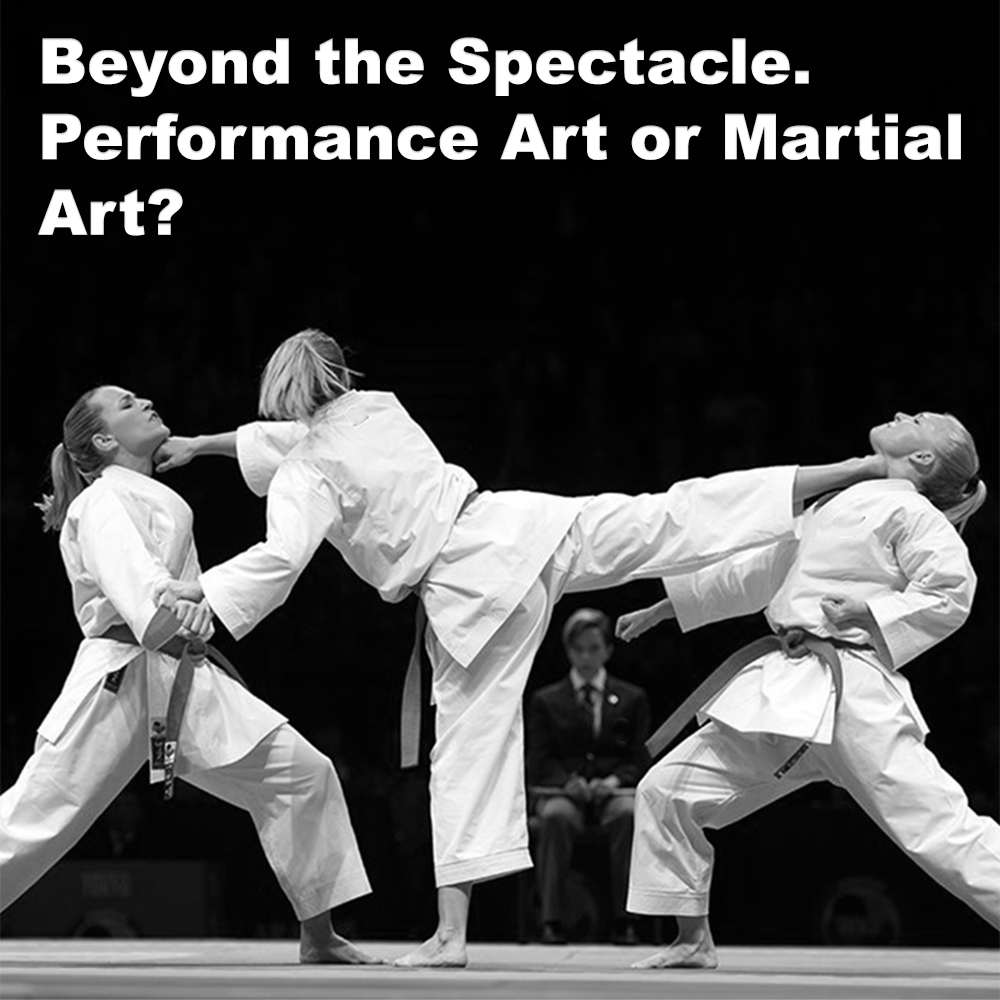
Beyond the Spectacle. Performance Art or Martial Art?
Posted by ADAM CARTER on APR 29, 2024

Beyond the Spectacle. Performance Art or Martial Art?
(2 minute 35 second read)
Many people seem to grapple with the core purpose of karate. Is it a sport, a means to follow a legacy or tradition, a way to develop character, self-defense, or more?
In the early stages of my karate journey, competitive fighting was my primary focus. I eagerly awaited the moment to face an opponent and hear the word “hajime” (begin/start). Other aspects of karate held little interest for me back then….. But I knew what I wanted.
However, as time passes, you realize there’s more to it than just fighting.
Today, sparring in a dojo with your hands held in a high guard, at a safe distance between you and your opponent, wearing protective equipment – it’s not reality.
A determined attacker won’t play by dojo rules. The comfortable distance you’re used to vanishes in an instant, replaced by the chaos of a real encounter. Then what?
Dojo sparring is a world away. You face your opponent, bow, assume stances, then slowly close the gap before initiating attacks. This structured environment offers valuable training, but it can lull you into a false sense of security.
What most practitioners don’t train for, is someone who is right in your face. You smell his breath, shouting, swearing, spitting, grabbing, biting, head-butting, and more. This is reality.
The majority of karate that we see today contains a high degree of competition elements. The kata, which I believe is the central component of karate, has a lower priority, has become a performance art, and is less about combative training, and more about a way to pass the next grade. Many karate practitioners ignore the combative applications that the kata contain.
What many fail to realize, is that by abandoning kata, they have effectively abandoned the very syllabus of the original fighting system. Without kata, all that remains of karate is a ‘shell’ of the original art.
Kata has great value when correctly approached. If practiced with the understanding that they were originally created as mnemonics for two-person self-defense drills, then the drills they contain can be functional, pragmatic, and contribute to an effective combative system.
Many people question the effectiveness of kata. This misunderstanding often stems from viewing kata as a choreographed fight sequence against multiple attackers, performed from beginning to end.
No. That is a modern interpretation of kata.
To effectively analyze kata, you have to incorporate attacks that mimic real-world violence, such as grabs, pulls, shoves (both one and two-handed), swinging punches, and wild low kicks. These “habitual acts of violence” should replace the traditional, stylized attacks found in karate-vs-karate practice.
Additionally, break down the kata into smaller sections and practice them from closer range, replicating the chaos of a real-world encounter.
Ineffective applications do not help anyone, and it’s important for instructors to not just give lip service to kata application, or give the odd example that just doesn’t work.
The beauty of karate lies in its versatility. Whether your goals are competition, self-improvement, self-defense, or a combination of these, karate can offer you so much. However, it’s crucial to understand the context of your training.
The rise of social media has exposed many to dramatic kata displays, often lacking real-world effectiveness. This disconnect can lead viewers to perceive karate as mere spectacle, of no use in actual combat, just performance aesthetics, and lacking any efficacy.
But beyond the improbable spectacle lies a system waiting to be explored. You have to delve deeper, and discover the probable – karate’s true potential for self-defense.
